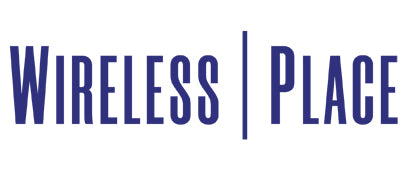Be the first to hear about the newest phones!

The Adoption of 5G Technology: A Comparative Analysis with LTE for the Average American
The rollout of 5G technology has been one of the most talked-about advancements in telecommunications in recent years. Promised to revolutionize connectivity, 5G is the fifth generation of mobile network technology, following the widely adopted LTE (Long-Term Evolution) standard. This essay examines the adoption of 5G technology and its significance compared to LTE for the average American.
Understanding 5G and LTE
To appreciate the impact of 5G, it's important to understand the differences between 5G and its predecessor, LTE. LTE, commonly known as 4G, significantly improved on 3G networks by offering faster speeds, better reliability, and lower latency. It enabled high-definition streaming, smooth video calls, and the proliferation of data-intensive applications.
5G, on the other hand, brings even more dramatic enhancements. It operates on three spectrum bands: low, mid, and high. Low-band 5G offers broad coverage and better penetration through buildings but at speeds only marginally faster than LTE. Mid-band 5G, also known as “sub-6 GHz,” offers a balance between speed and coverage. The high-band spectrum, or “mmWave,” provides incredibly fast speeds but has limited range and poorer penetration.
Speed and Latency: What Changes for Users?
One of the most noticeable improvements with 5G is its speed. While LTE typically offers download speeds ranging from 20 to 30 Mbps, 5G can potentially reach speeds exceeding 1 Gbps, especially with mmWave technology. For the average American, this means that tasks requiring significant bandwidth—such as streaming ultra-high-definition videos or downloading large files—can be accomplished more quickly and efficiently.
Latency, or the delay before a transfer of data begins following an instruction, is another area where 5G excels. LTE latency averages around 30-50 milliseconds, whereas 5G aims to reduce this to as low as 1 millisecond. Although this reduction may not be immediately perceptible for everyday activities, it is crucial for applications requiring real-time responses, such as remote surgery or advanced gaming. For most average users, the difference in latency might not be a game-changer but represents a step forward in the technology’s evolution.
Network Capacity and Reliability
The adoption of 5G brings improvements in network capacity and reliability. LTE networks can become congested during peak times, leading to slower speeds and reduced performance. 5G networks, with their enhanced architecture and spectrum efficiency, are designed to handle significantly more devices and data traffic simultaneously.
This means that in densely populated areas or during large public events, users are less likely to experience network slowdowns. For the average American living in urban areas, this translates to more reliable connections even when the network is heavily used. In rural areas, the rollout of 5G may also provide better connectivity compared to LTE, especially as low-band spectrum becomes more widely available.
Impact on Daily Life and Productivity
For everyday tasks, the difference between 5G and LTE might not always be striking. Browsing the web, using social media, and sending texts see improvements, but these changes may not be transformative for all users. However, 5G’s potential to support advanced applications could influence daily life in more subtle ways.
For instance, 5G enables the growth of smart home devices and the Internet of Things (IoT). This technology supports more devices connecting simultaneously without sacrificing performance, leading to smarter and more efficient home environments. For average users, this means enhanced experiences with smart home systems, from security cameras to energy management.
In terms of productivity, 5G’s faster speeds and lower latency can facilitate better remote work experiences. Video conferencing becomes smoother, large file transfers are quicker, and collaborative tools function more effectively. As remote work and flexible working arrangements continue to grow, these enhancements become increasingly valuable.
Challenges and Limitations
Despite its advantages, the adoption of 5G is not without challenges. The high-band spectrum, while offering exceptional speeds, is limited in range and can be obstructed by physical barriers. This necessitates a dense network of small cells and infrastructure, which can be costly and time-consuming to deploy.
Additionally, while 5G is gradually being rolled out, the transition from LTE to 5G is still ongoing. The availability of 5G networks and devices varies by location and carrier. In many areas, 5G coverage is still limited, and the benefits might not be fully realized until the infrastructure is more widely established.
Economic and Societal Implications
The broader economic and societal implications of 5G adoption are significant. 5G has the potential to drive innovations in various sectors, including healthcare, transportation, and manufacturing. For example, it could enable advancements in telemedicine, autonomous vehicles, and smart cities.
For the average American, the economic benefits might manifest indirectly through improved services and new technologies. While direct savings or financial gains from 5G might not be apparent, the enhanced capabilities of 5G could lead to new job opportunities and economic growth, contributing to overall societal benefits.
Conclusion
In summary, the adoption of 5G technology represents a substantial leap forward from LTE, offering higher speeds, lower latency, and increased network capacity. For the average American, these improvements translate into faster internet, more reliable connections, and enhanced experiences with emerging technologies. While the full impact of 5G may take time to materialize as the infrastructure continues to develop, its benefits are already beginning to reshape how we interact with technology and each other. As 5G becomes more widespread, it is likely to play an increasingly integral role in our daily lives, driving innovation and connectivity in ways that were previously unimaginable.

Comments
Leave a comment